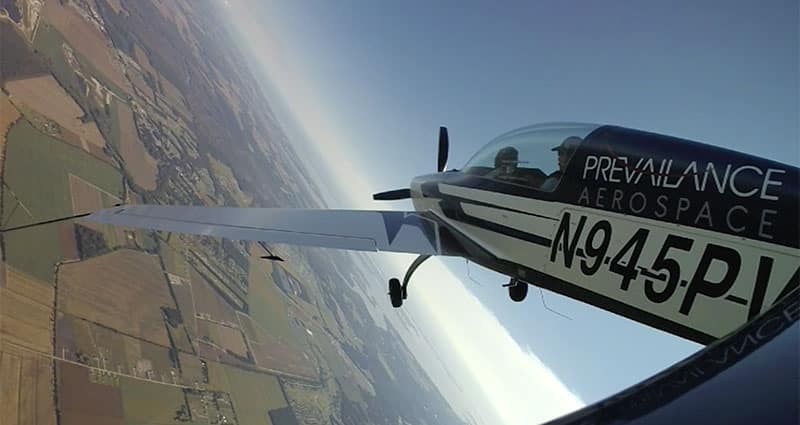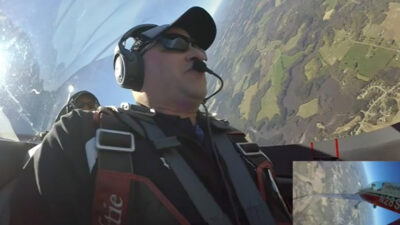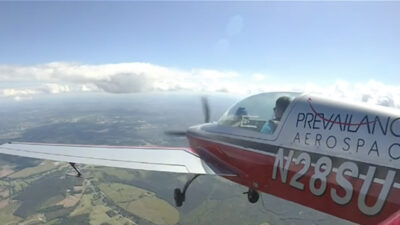Get Yourself to Yes

I am not a picky eater, but I was 40 years old before I ever ate a Brussels sprout. My grandfather didn’t eat them, my father didn’t eat them and I’ll be gosh darned if I was ever going to have one cross the plane of my mouth.
One night I was having dinner with some good friends and that was the only vegetable being served. I can’t say I was excited about the prospect. I had gone my entire life without having ever seen a Brussels sprout on my plate and had never even considered the possibility of eating one.
My dad, who at age 74 has still never eaten a Brussels sprout, asked me why I would say “yes” to that. It boiled down to three simple reasons. First, my friend is a good cook and she has fed me dozens of great meals over the years. Second, everyone else was eating them and seemingly enjoying them. Finally, there were chunks of bacon in the skillet with the sprouts.
Considering the Inconsiderable
I work with professional pilots every day, either as their first officer, a simulator instructor, or as a CFI in piston airplanes. In all cases, I see many “Type A” personalities determined to excel during that training evolution but fewer who look beyond the flight or simulator immediately in front of them.
Occasionally, there are those who step outside the basic learning objectives, SOPs and QRH and ask the questions “What if?” and “What then?” These are the pilots that dissect an accident report and ask “How could that have happened to me” and “What will I do when it does happen to me?” They take the time to consider the inconsiderable.
I ask myself those questions all the time and feel that I am in the minority. I actually seek out opportunities to get outside my comfort zone because it ultimately makes me better. The trepidation of the “what if” and “what then” dissipates with each new skill set and experience. Like any responsible adult, I also mitigate risk in real time, which immediately makes the stretch a bit more manageable.
Here are a few key elements when it comes to flight training:
- Always training with an instructor that I have confidence in
- Always utilizing equipment that I have confidence in
- Always vetting an organization with colleagues I have confidence in
If I can jump into a training evolution with the above three items lined up in a way that satisfies me, the actual training is a piece of cake. I get myself to yes before I ever walk in the door and I’m open to learning.
To-date, this has included not just Brussels sprouts but SCUBA diving and aerobatics training. All three require different skill sets, but in each case, having the proper gear and someone I know and respect believe in the training makes it a minimal risk evolution.
Understanding and Embracing Fear
There is a significant amount of fear in the inaction tied to professional development in any given profession, including aviation. No one likes to address fear or even acknowledge that it exists within them.
A friend recently showed me an article in Forbes that addressed conquering fear because it is consistently rearing up its caustic head in the business world. Step one of addressing fear is to understand and embrace it for what it is:
Fear exists to keep us safe. It is not inherently bad or good but a tool we can use to make better decisions. Fear isn’t designed to keep us inactive, but to help us act in ways that generate the results we need and want. Embrace fear as instruction and let it inform your actions, but not control them (Steimle, 2016).
Safety is on the forefront of my mind every day. This is not because I’m a “safety guy” or risk averse. I just have responsibilities now that allow a more conservative version of myself to thrive. That conservative approach views safety as paramount, risk mitigation as a definitive and education as a methodology for progress.
Bottom line: Get yourself to yes. Brussels sprouts are delicious.
Resources
Steimle, J. (2016, Jan 4). 14 Ways to Conquer Fear. Forbes.

Prevailance Aerospace is a UPRT provider that has been working with corporate, government, and general aviation pilots to improve safety in the aviation industry. Prevailance Aerospace uses Extra 300 Series Aircraft for training and our pilots are experienced aviation professionals from various military and general aviation backgrounds. We know that successful aviation endeavors are accomplished through an uncompromising commitment to safety, impeccable professionalism, tremendous attention to detail, and constant improvement.
http://prevailanceaerospace.com
© 2025 Prevailance Aerospace. All Rights Reserved.
Next ArticleRelated Posts

Rise Up for the Next Generation
There is no doubt in my mind that flying is the way mankind is meant to travel, yet the continued success and growth of the industry requires a refined approach to safety. As someone who flies commercially and with a new interest in a career in aviation, I want the reassurance that the pilot in command (PIC) and crew are adequately prepared if and when an aircraft ends up in an upset.

Three Considerations That Set Pilots Up for Success
Constantly reviewing aviation accidents and incidents is challenging. As an instructor, it is not only the injuries and fatalities that make it hard, but the sheer magnitude of avoidable aspects of each incident. These safety reports prove that every Pilot in Command (PIC) is accountable for what transpires.

